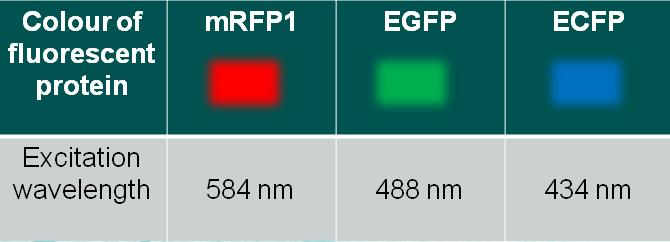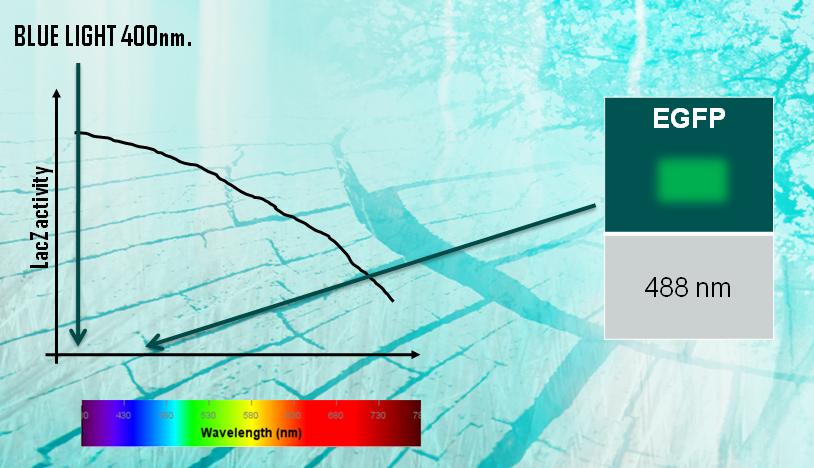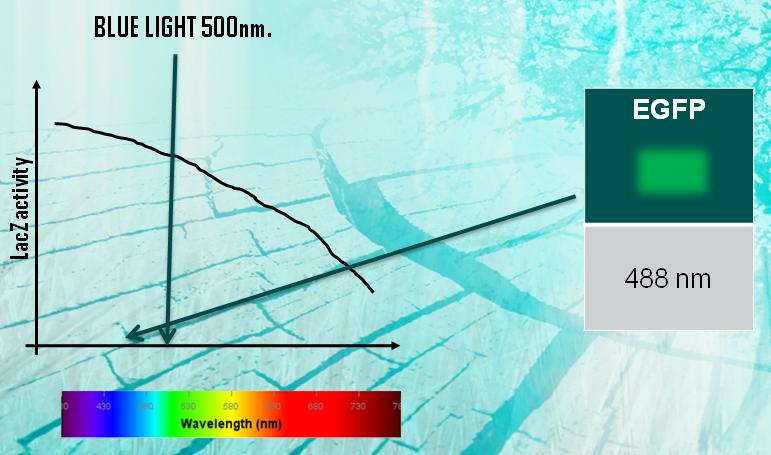Team:Sheffield/Further Work
From 2009.igem.org
(→How can we use the results we obtained from the experiments and the model to create a wavelength biosensor?) |
(→Barriers still to overcome) |
||
| (7 intermediate revisions not shown) | |||
| Line 27: | Line 27: | ||
From experiments we have characterised this trend of our initial system: | From experiments we have characterised this trend of our initial system: | ||
| - | |||
| - | We can achieve this through fusing different fluorescent proteins onto the system.Through the characterization of the system, we have a model which shows us: | + | We can achieve this through fusing different fluorescent proteins onto the system. Through the characterization of the system, we have a model which shows us the LacZ activity level decrease as the wavelength increases: |
| Line 35: | Line 34: | ||
| - | [[Image:Sheff_FP.jpg|400px| | + | [[Image:Sheff_FP.jpg|400px|center|boarder]] |
| - | Say if we fused EGFP (488nm) onto the LacZ gene. | + | '''Say if we fused EGFP (488nm) onto the LacZ gene.''' |
1. When we shine a blue light of 400nm onto our system, the LacZ activity in the system is high, but the wavelength of the light is not high enough to excite the fluorescent protein. | 1. When we shine a blue light of 400nm onto our system, the LacZ activity in the system is high, but the wavelength of the light is not high enough to excite the fluorescent protein. | ||
| + | |||
| + | |||
| + | [[Image:Sheff_400nm.jpg|400px|center|boarder]] | ||
| + | |||
2. The system will have an initial system that is switched on, but an EGFP that is switched off. Therefore the overall system is switched off | 2. The system will have an initial system that is switched on, but an EGFP that is switched off. Therefore the overall system is switched off | ||
| - | 3. However if we shine a blue light of 500nm onto our system, the activity of the LacZ is high and the EGFP is also activated and so we have an overall system that is switched on | + | [[Image:Sheff_500nm.jpg|400px|center|boarder]] |
| + | |||
| + | 3. However if we shine a blue light of 500nm onto our system, the activity of the LacZ is high and the EGFP is also activated and so we have an overall system that is '''''switched on!!!!''''' | ||
| + | |||
| + | |||
| + | [[Image:Sheff_Tally_chart.png|400px|center|border]] | ||
| + | |||
| + | Through this method, we can fuse several fluorescent protein with different excitation and emission wavelengths and therefore get a system that can respond to different wavelengths. | ||
| + | |||
| + | == Barriers still to overcome == | ||
| + | |||
| + | There are still many technical details yet still to be investigated, a few main issues are: | ||
| + | |||
| + | 1. Method of fusing a fluorescing protein onto the LacZ gene | ||
| + | |||
| + | 2. What kind or type of fluorescing protein should be used, as there are many types. The choice of the fluorescent protein | ||
| - | + | 3. How can we fuse more than one fluorescent protein on the LacZ? | |
| - | + | ||
| - | |||
|} | |} | ||
Latest revision as of 17:56, 18 October 2009
| Home | Team | Project | Further Work | Modeling | Notebook |
|---|
|
How can we use the results we obtained from the experiments and the model to create a wavelength biosensor?This is how we propose that the system would work: From experiments we have characterised this trend of our initial system:
3. However if we shine a blue light of 500nm onto our system, the activity of the LacZ is high and the EGFP is also activated and so we have an overall system that is switched on!!!!
Through this method, we can fuse several fluorescent protein with different excitation and emission wavelengths and therefore get a system that can respond to different wavelengths. Barriers still to overcomeThere are still many technical details yet still to be investigated, a few main issues are: 1. Method of fusing a fluorescing protein onto the LacZ gene 2. What kind or type of fluorescing protein should be used, as there are many types. The choice of the fluorescent protein 3. How can we fuse more than one fluorescent protein on the LacZ?
|
 "
"




